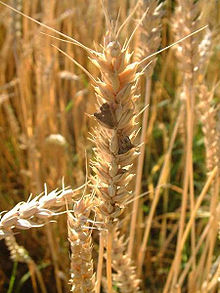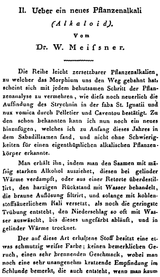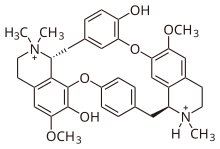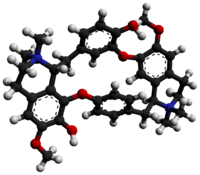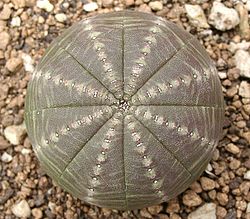| Ergot | |
|---|---|

| |
| Claviceps purpurea | |
| Scientific classification | |
| Kingdom: | Fungi |
| Division: | Ascomycota |
| Class: | Sordariomycetes |
| Order: | Hypocreales |
| Family: | Clavicipitaceae |
| Genus: | Claviceps Tul., 1853 |
| Species | |
|
About 50, including: Claviceps africana Claviceps fusiformis Claviceps paspali Claviceps purpurea Claviceps sorghi Claviceps zizaniae Claviceps lutea | |
Ergot (pron. /ˈɜːrɡət/ UR-gət) or ergot fungi refers to a group of fungi of the genus Claviceps.
The most prominent member of this group is Claviceps purpurea ("rye ergot fungus"). This fungus grows on rye and related plants, and produces alkaloids that can cause ergotism in humans and other mammals who consume grains contaminated with its fruiting structure (called ergot sclerotium).
Claviceps includes about 50 known species, mostly in the tropical regions. Economically significant species include C. purpurea (parasitic on grasses and cereals), C. fusiformis (on pearl millet, buffel grass), C. paspali (on dallis grass), C. africana (on sorghum), and C. lutea (on paspalum). C. purpurea most commonly affects outcrossing species such as rye (its most common host), as well as triticale, wheat, and barley. It affects oats only rarely.
C. purpurea has at least three races or varieties, which differ in their host specificity:
- G1 — land grasses of open meadows and fields;
- G2 — grasses from moist, forest, and mountain habitats;
- G3 (C. purpurea var. spartinae) — salt marsh grasses (Spartina, Distichlis).
Life cycle
An ergot kernel, called a sclerotium, develops when a spore of fungal species of the genus Claviceps infects a floret of flowering grass or cereal. The infection process mimics a pollen grain growing into an ovary during fertilization. Infection requires that the fungal spore have access to the stigma; consequently, plants infected by Claviceps are mainly outcrossing species with open flowers, such as rye (Secale cereale) and ryegrasses (genus Lolium). The proliferating fungal mycelium then destroys the plant ovary and connects with the vascular bundle originally intended for seed nutrition. The first stage of ergot infection manifests itself as a white soft tissue (known as sphacelia) producing sugary honeydew, which often drops out of the infected grass florets. This honeydew contains millions of asexual spores (conidia), which insects
disperse to other florets. Later, the sphacelia convert into a hard dry
sclerotium inside the husk of the floret. At this stage, alkaloids and lipids accumulate in the sclerotium.
Claviceps species from tropic and subtropic regions produce macro- and microconidia in their honeydew.
Macroconidia differ in shape and size between the species, whereas
microconidia are rather uniform, oval to globose (5x3μm). Macroconidia
are able to produce secondary conidia. A germ tube emerges from a
macroconidium through the surface of a honeydew drop and a secondary
conidium of an oval to pearlike shape is formed, to which the contents
of the original macroconidium migrates. Secondary conidia form a white,
frost-like surface on honeydew drops and spread via the wind. No such
process occurs in Claviceps purpurea, Claviceps grohii, Claviceps nigricans, and Claviceps zizaniae, all from northern temperate regions.
When a mature sclerotium drops to the ground, the fungus remains
dormant until proper conditions (such as the onset of spring or a rain
period) trigger its fruiting phase. It germinates, forming one or
several fruiting bodies with heads and stipes, variously coloured (resembling a tiny mushroom). In the head, threadlike sexual
spores form, which are ejected simultaneously when suitable grass hosts
are flowering. Ergot infection causes a reduction in the yield and
quality of grain and hay, and if livestock eat infected grain or hay it
may cause a disease called ergotism.
Black and protruding sclerotia of C. purpurea are well
known. However, many tropical ergots have brown or greyish sclerotia,
mimicking the shape of the host seed. For this reason, the infection is
often overlooked.
Insects, including flies and moths, carry conidia of Claviceps species, but it is unknown whether insects play a role in spreading the fungus from infected to healthy plants.
Evolution
The evolution of plant parasitism in the Clavicipitaceae dates back at least 100 million years, to the early-mid Cretaceous. An amber fossil discovered in 2014 preserves a grass spikelet
and an ergot-like parasitic fungus. The fossil shows that the original
hosts of the Clavicipitaceae could have been grasses. The discovery also
establishes a minimum time for the conceivable presence of psychotropic compounds in fungi.
Several evolutionary processes have acted to diversify the array of
ergot alkaloids produced by fungi; these differences in enzyme
activities are evident at the levels of substrate specificity (LpsA),
product specification (EasA, CloA) or both (EasG and possibly CloA).
The “old yellow enzyme,” EasA, presents an outstanding example. This
enzyme catalyzes reduction of the C8=C9 double-bond in chanoclavine I,
but EasA isoforms differ in whether they subsequently catalyze
reoxidation of C8–C9 after rotation.
This difference distinguishes most Clavicipitaceae from Trichocomaceae,
but in Clavicipitaceae it is also the key difference dividing the
branch of classical ergot alkaloids from dihydroergot alkaloids, the
latter often being preferred for pharmaceuticals due to their relatively
few side effects.
Effects on humans and other mammals
Ergot-derived drug to stop postpartum bleeding
The ergot sclerotium contains high concentrations (up to 2% of dry mass) of the alkaloid ergotamine, a complex molecule consisting of a tripeptide-derived cyclol-lactam ring connected via amide linkage to a lysergic acid (ergoline) moiety, and other alkaloids of the ergoline group that are biosynthesized by the fungus. Ergot alkaloids have a wide range of biological activities including effects on circulation and neurotransmission.
Ergot alkaloids are classified as:
- derivatives of 6,8-dimethylergoline and
- lysergic acid derivatives.
Ergotism
is the name for sometimes severe pathological syndromes affecting
humans or other animals that have ingested plant material containing
ergot alkaloid, such as ergot-contaminated grains. The Hospital Brothers of St. Anthony, an order of monks established in 1095, specialized in treating ergotism victims
with balms containing tranquilizing and circulation-stimulating plant
extracts. The common name for ergotism is "St. Anthony's Fire", in reference to this order of monks and the severe burning sensations in the limbs which was one of the symptoms.
There are two types of ergotism, the first is characterized by muscle
spasms, fever and hallucinations and the victims may appear dazed, be
unable to speak, become manic, or have other forms of paralysis or
tremors, and suffer from hallucinations and other distorted perceptions. This is caused by serotonergic stimulation of the central nervous system by some of the alkaloids.
The second type of ergotism is marked by violent burning, absent
peripheral pulses and shooting pain of the poorly vascularized distal
organs, such as the fingers and toes, and are caused by effects of ergot alkaloids on the vascular system due to vasoconstriction, sometimes leading to gangrene and loss of limbs due to severely restricted blood circulation.
The neurotropic activities of the ergot alkaloids may also cause hallucinations and attendant irrational behaviour, convulsions, and even death. Other symptoms include strong uterine contractions, nausea, seizures,
high fever, vomiting, loss of muscle strength and unconsciousness.
Since the Middle Ages, controlled doses of ergot were used to induce abortions and to stop maternal bleeding after childbirth.[17]
Klotz offers a detailed overview of the toxicities in mammalian
livestock, stating that the activities are attributable to antagonism or
agonism of neurotransmitters, including dopamine, serotonin and norepinephrine. As well, he shares that the adrenergic blockage by ergopeptines (e.g., ergovaline or ergotamine) leads to potent and long-term vasoconstriction, and can result in reduced blood flow resulting in intense burning pain (St. Anthony’s fire), edema, cyanosis, dry gangrene and even loss of hooves in cattle or limbs in humans. Reduced prolactin
due to ergot alkaloid activity on dopamine receptors in the pituitary
is also common in livestock. Reduced serum prolactin is associated with
various reproductive problems in cattle, and especially in horses,
including agalactia and poor conception, and late-term losses of foals and sometimes mares due to dystocia and thickened placentas.
Although both gangrenous and convulsive symptoms are seen in naturally
occurring ergotism resulting from the ingestion of fungus infected rye,
only gangrenous ergotism has been reported following the excessive
ingestion of ergotamine tartrate.
Ergot extract has been used in pharmaceutical preparations, including ergot alkaloids in products such as Cafergot (containing caffeine and ergotamine or ergoline) to treat migraine headaches, and ergometrine, used to induce uterine contractions and to control bleeding after childbirth.
Clinical ergotism as seen today results almost exclusively from the
excessive intake of ergotamine tartrate in the treatment of migraine
headache.
In addition to ergot alkaloids, Claviceps paspali also produces tremorgens (paspalitrem) causing "paspalum staggers" in cattle. The fungi of the genera Penicillium and Aspergillus also produce ergot alkaloids, notably some isolates of the human pathogen Aspergillus fumigatus, and have been isolated from plants in the family Convolvulaceae, of which morning glory
is best known. The causative agents of most ergot poisonings are the
ergot alkaloid class of fungal metabolites, though some ergot fungi
produce distantly related indole-diterpene alkaloids that are
tremorgenic.
Ergot does not contain lysergic acid diethylamide (LSD) but instead contains lysergic acid as well as its precursor, ergotamine.
Lysergic acid is a precursor for the synthesis of LSD. Their realized
and hypothesized medicinal uses have encouraged intensive research since
the 1950s culminating on the one hand in development of drugs both
legal (e.g., bromocriptine)
and illegal (e.g., lysergic acid diethylamide= LSD), and on the other
hand in extensive knowledge of the enzymes, genetics, and diversity of
ergot alkaloid biosynthetic pathways.
The January 4, 2007 issue of the New England Journal of Medicine includes a paper that documents a British study of more than 11,000 Parkinson's disease patients. The study found that two ergot-derived drugs, pergolide and cabergoline, commonly used to treat Parkinson's Disease may increase the risk of leaky heart valves by up to 700%.
History
Ergot on wheat stalks
Ergotism is the earliest recorded example of mycotoxicosis, or poisoning caused by toxic molds.
Early references to ergot poisoning (ergotism) date back as far as 600 BC, an Assyrian tablet referred to it as a 'noxious pustule in the ear of grain'. In 350 BC, the Parsees described 'noxious grasses that cause pregnant women to drop the womb and die in childbed'. In ancient Syria, ergot was called 'Daughter of Blood'. Radulf Glaber described an ailment he called 'hidden fire' or ignus ocultus, in which a burning of the limb is followed by its separation from the body, often consuming the victim in one night. In 1588, Johannes Thallius wrote that it is called 'Mother of Rye', or rockenmutter, and is used to halt bleeding.
Human poisoning due to the consumption of rye bread made from ergot-infected grain was common in Europe in the Middle Ages. The first mention of a plague of gangrenous ergotism in Europe comes from Germany in 857, following this France and Scandinavia experienced similar outbreaks;
England is noticeably absent from the historical regions affected by
ergotism as their main source of food was wheat, which is resistant to
ergot fungi. In 944, a massive outbreak of ergotism caused 40,000 deaths in the regions of Aquitaine, Limousin, Perigord, and Angoumois in France. In Hesse in 1596, Wendelin Thelius was one of the first to attribute ergotism poisoning to grain. In 1778, S. Tessier, observing a huge epidemic in Sologne,
France in which more than 8,000 people died, recommended drainage of
fields, compulsory cleaning of grain, and the substitution of potatoes
for affected grain.
Saint Anthony's fire and the Antonites
In 1722, the Russian Tzar Peter the Great was thwarted in his campaign against the Ottoman Empire
as his army, traveling down the Terek steppe, were struck by ergotism
and were forced to retreat in order to find edible grains. A diary entry
from the time describes that as soon as people ate the poisoned bread
they became dizzy, with such strong nerve contractions that those who
did not die from the first day found their hands and feet falling off,
akin to frostbite. The epidemic was known as Saint Anthony's fire, or ignis sacer, and some historical events, such as the Great Fear in France during the French Revolution have been linked to ergot poisoning. Saint Anthony was a 3rd Century Egyptian ascetic who lived by the Red Sea and was known for long fasting in which he confronted terrible visions and temptations sent from the Devil. He was credited by two noblemen for assisting them in recovery from the disease; they subsequently founded the Order of St. Anthony in honor of him. Anthony was a popular subject for art in the Middle Ages and his symbol is a large blue "T" sewn onto the shoulder of the order's monks, symbolizing the crutch used by the ill and injured.
The Order of St. Anthony, who were also known as Antonites, grew
quickly and hospitals spread through France, Germany, and Scandinavia
and gained wealth and power as grateful patrons bestowed money and
charitable goods to the hospitals. By the end of the Middle Ages, there were 396 settlements and 372 hospitals owned by the order
and pilgrimages to such hospitals became popular as well as the
donation of limbs lost to ergotism, which were displayed near shrines to
the saint. These hagiotherapeutic
centers were the first specialized European medical welfare systems and
the friars of the order were knowledgeable about treatment of ergotism
and the horrifying effects of the poison. The sufferers would receive ergot-free meals, wines containing vasodilating and analgesic herbs, and applications of Antonites-balsalm, which was the first transdermal therapeutic system (TTS) in medical history. Their medical recipes have been lost to time, though some recorded treatments still remain.
After 1130 AD, the monks were no longer permitted to perform
operations, and so barber surgeons were employed to remove gangrenous
limbs and treat open sores. Three barbers founded a hospital in Memmingen
in 1214 and accepted those who were afflicted with the gangrenous form
of ergotism. Patients were fed and housed with the more able-bodied
individuals acting as orderlies and assistants. Patients with the
convulsive form of ergotism, or ergotismus convulsivus, were
welcomed for only nine days before they were asked to leave as
convulsive ergotism was seen as less detrimental. Though the sufferers
often experienced irreversible effects, they most often returned to
their families and resumed their livelihoods.
An important aspect to the Order of St. Anthony's treatment
practices was the exclusion of rye bread and other ergot-containing
edibles, which halted the progression of ergotism.
There was no known cure for ergotism itself, however there was
treatment of the symptoms, which often included blood constriction,
nervous disorder, and/or hallucinations; if the sufferer survived the
initial poisoning, his limbs would often fall off and he or she would
continue to improve in health if they halted consumption of ergot.
The trunk of the body remained relatively untouched by the disease
until its final stages and the victims, not understanding the cause of
their ailment, would continue to imbibe ergot-laden food for weeks until
the condition reached their digestive system.
It is believed that the peasantry and children were most susceptible to
ergotism, though the wealthy were afflicted as well, as at times entire
villages relied on tainted crops for sustenance and during times of
famine, ergotism reached into every house.
Ergot fungus is impervious to heat and water, thus it was most often
baked into bread through rye flour; though other grasses can be
infected, it was uncommon in Medieval Europe to consume grasses other than rye.
The physiological effects of ergot depended upon the concentration and
combinations of the ingested ergot metabolites, as well as the age and
nutritional status of the afflicted individual. The Antonites began to decline after physicians discovered the genesis of ergotism and recommended methods for removing the sclerotium from the rye crops. In 1776, the cloisters of the Antonites were incorporated into the Maltese Knights Hospitaller,
losing much of their medical histories in the process and losing the
ergotism cures and recipes due to lack of use and lack of preservation.
Usage in gynaecology and obstetrics
Midwives and very few doctors in Europe have used extracts from ergot for centuries:
- In a Nürnberg manuscript of 1474 powdered ergot was prescribed together with Laurel-fruits and rhizomes of Salomon’s seals to cure »permutter« or »heffmutter«, that means pain in the lower abdomen caused by the »uprising of the womb«
- In a printed book of 1582 the German physician Adam Lonicer wrote, that three sclerotia of ergot, used several times a day, were used by midwives as a good remedy in case of the »uprising and pain of the womb« (»auffſteigen vnd wehethumb der mutter«)
- Joachim Camerarius the Younger wrote in 1586, that sclerotia of ergot held under the tongue, would stop bleeding
To prove, that ergot is a harmless sort of grain, in 1774 the French pharmacist Antoine-Augustin Parmentier edited a letter, he had received from Madame Dupile, a midwife of Chaumont-en-Vexin. She had told him, that if uterine contractions were too weak in the expulsion stage of childbirth she and her mother gave peeled ergot in an amount of the filling of a thimble solved in water, wine or broth. The administration of ergot was followed by a mild childbirth within 15 minutes. The French physician Jean-Baptiste Desgranges (1751–1831) published in 1818, that in 1777 he had met midwives in Lyon,
who successfully treated feeble uterine contractions by administering
the powder of ergot. Desgranges joined this remedy into his therapeutic
arsenal. From 1777 to 1804 he was successful in alleviating childbirth
for more than twenty women by the administration of the powder of
ergot. He never saw any side-effect of this treatment.
In 1807 Dr. John Stearns of Saratoga County wrote to a friend, that he had used over several years a »pulvis parturiens« with complete success in patients with »lingering parturitation«. This »pulvis parturiens« consisted of ergot, that he called a »spurious groth of rye«. He boiled »half a drachm« (ca. 2g) of that powder in half a pint of water and gave one third every twenty minutes, till the pains commenced. In 1813 Dr. Oliver Prescott (1762–1827) of Newburyport
published a dissertation "on the natural history and medical effects of
the secale cornutum,” in which he described and analysed the experience
he had gathered over five years while using ergot in cases of poor
uterine action in the second stage of labour in childbirth.
The 1836 Dispensatory of the United States recommended »to
a woman in labour fifteen or twenty grains [ca. 1 to 1,3g] of ergot in
powder to be repeated every twenty minutes, till its peculiar effects
are experienced, or till the amount of a drachm [ca. 3,9g] has been
taken«.
In 1837 the French Codex Pharmacopee Francaise required ergot to be kept in all pharmacies.
Low to very low evidence from clinical trials suggests that
prophylactic use of ergot alkaloids, administered by intravenous (IV) or
intramuscular (IM) in the third stage of labor, may reduce blood loss
and may reduce the risk of moderate to severe hemorrhage following
delivery, however this medication may also be associated with higher
blood pressure and higher pain. It is not clear of oral ergo alkaloids are beneficial or harmful as they have not been well studied.
A 2018 Cochrane Systematic Review concluded that other medications such
as oxytocin, syntometrine and prostaglandins, may be preferred over
ergot alkaloids.
Though ergot was known to cause abortions in cattle
and humans, it was not a recognized use for it as abortion was illegal
in most countries, thus evidence for its use in abortion is unknown.
Most often, ergot was used to speed the process of parturition or
delivery, and was not used for the purpose of halting postpartum
bleeding, which is a concern of childbirth. However, until anesthesia
became available, there was no antidote or way of controlling the
effects of ergot. So if the fetus did not move as expected, the drug
could cause the uterus to mold itself around the child, rupturing the
uterus and killing the child. David Hosack, an American physician, noted the large number of stillbirths resulting from ergot use and stated that rather than pulvis ad partum, it should be called pulvis ad mortem.
He began advocating for its use to halt postpartum bleeding.
Eventually, doctors determined that the use of ergot in childbirth
without an antidote was too dangerous. They ultimately restricted its
use to expelling the placenta
or stopping hemorrhage. Not only did it constrict the uterus, ergot had
the ability to increase or decrease blood pressure, induce hypothermia
and emesis, and influence pituitary hormone secretions.
In 1926, Swiss psychiatrist Hans Maier suggested to use ergotamine for
the treatment of vascular headaches of the migraine type.
In the 1930s, abortifacient
drugs were marketed to women by various companies under various names
such as Molex pills and Cote pills. Since birth control devices and
abortifacients were illegal to market and sell at the time, they were
offered to women who were "delayed". The recommended dosage was seven
grains of ergotin a day. According to the United States Federal Trade Commission (FTC) these pills contained ergotin, aloes, Black Hellebore,
and other substances. The efficacy and safety of these pills are
unknown. The FTC deemed them unsafe and ineffective and demanded that
they cease and desist selling the product. Currently, over a thousand
compounds have been derived from ergot ingredients.
Speculated cause of hysterics and hallucinations
It has been posited that Kykeon, the beverage consumed by participants in the ancient Greek Eleusinian Mysteries cult, might have been based on hallucinogens from ergotamine, a precursor to the potent hallucinogen lysergic acid diethylamide (LSD), and ergonovine.
British author John Grigsby contends that the presence of ergot in the stomachs of some of the so-called 'bog-bodies' (Iron Age human remains from peat bogs Northeast Europe, such as the Tollund Man) is indicative of use of Claviceps purpurea in ritual drinks in a prehistoric fertility cult akin to the Greek Eleusinian Mysteries. In his 2005 book Beowulf and Grendel, he argues that the Anglo-Saxon poem Beowulf is based on a memory of the quelling of this fertility cult by followers of Odin. He writes that Beowulf, which he translates as barley-wolf, suggests a connection to ergot which in German was known as the 'tooth of the wolf'.
Linnda R. Caporael posited in 1976 that the hysterical symptoms of young women that had spurred the Salem witch trials had been the result of consuming ergot-tainted rye.
However, Nicholas P. Spanos and Jack Gottlieb, after a review of the
historical and medical evidence, later disputed her conclusions. Other authors have likewise cast doubt on ergotism as the cause of the Salem witch trials.
Claviceps purpurea
Mankind has known about Claviceps purpurea for a long time, and its appearance has been linked to extremely cold winters that were followed by rainy summers.
The sclerotial stage of C. purpurea conspicuous on the
heads of ryes and other such grains is known as ergot. Favorable
temperatures for growth are in the range of 18–30 °C. Temperatures above
37 °C cause rapid germination of conidia. Sunlight has a chromogenic effect on the mycelium, with intense coloration. Cereal mashes and sprouted rye are suitable substrates for growth of the fungus in the laboratory.
Claviceps africana
Claviceps africana infects sorghum.
In sorghum and pearl millet, ergot became a problem when growers
adopted hybrid technology, which increased host susceptibility. It only infects unfertilized ovaries, so self-pollination and fertilization can decrease the presence of the disease, but male-sterile lines are extremely vulnerable to infection. Symptoms of infection by C. africana include the secretion of honeydew (a fluid with high concentrates of sugar and conidia), which attracts insects like flies, beetles, and wasps that feed on it. This helps spread the fungus to uninfected plants.
C. africana caused ergot disease that caused a famine in 1903-1906 in Northern Cameroon, West Africa, and also occurs in eastern and southern Africa, especially Zimbabwe and South Africa.
Male sterile sorghums (also referred to as A-lines) are especially
susceptible to infection, as first recognized in the 1960s, and massive
losses in seed yield have been noted. Infection is associated with cold
night temperatures that are below 12 °C occurring two to three weeks
before flowering.
Sorghum ergot caused by Claviceps africana Frederickson,
Mantle and De Milliano is widespread in all sorghum growing areas,
whereas the species was formerly restricted to Africa and Asia where it
was first recorded more than 90 years ago, it has been spreading rapidly
and by the mid-1990s it reached Brazil, South Africa, and Australia. By 1997, the disease had spread to most South American countries and the Caribbean including Mexico, and by 1997 had reached Texas in the United States.

